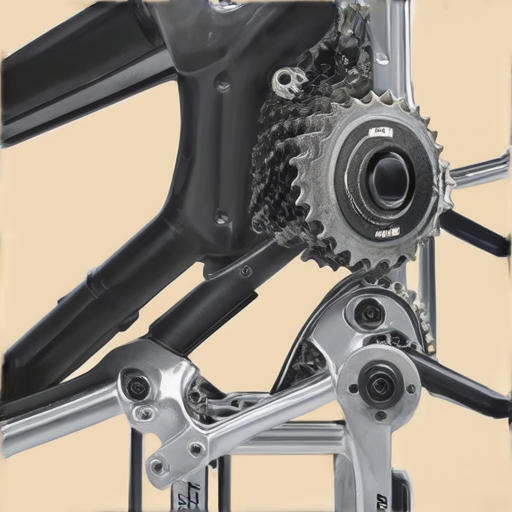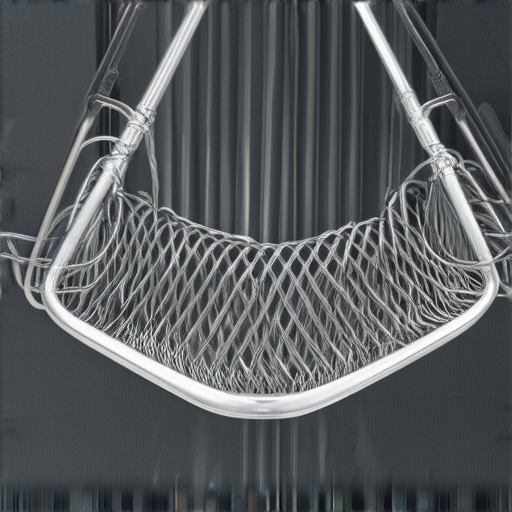When it comes to choosing the perfect bike, one of the most critical decisions riders face is selecting the right bike frame materials. With numerous options available, from traditional steel to cutting-edge carbon fiber, each material offers unique benefits and drawbacks that can significantly impact performance, durability, and overall riding experience. In this comprehensive guide, we’ll delve into the world of bicycle tubing options and explore the advantages and disadvantages of different frame building supplies, helping you make an informed decision when selecting the ideal bike frame material for your next ride.

Bike Frame Materials
The choice of material for a bike frame depends on several factors, including weight, durability, and budget.
- Steel: Steel is a popular choice for bike frames due to its strength, durability, and affordability. It can be made into various shapes and sizes, making it suitable for different types of bikes.
- Aluminum Alloy: Aluminum alloy is another common material used for bike frames. It is lightweight, corrosion-resistant, and easy to manufacture, making it a popular choice for road bikes and mountain bikes.
- Titanium: Titanium is a strong, lightweight metal that is often used for high-end bike frames. It offers excellent corrosion resistance and is ideal for riders who want a durable yet lightweight frame.
- Carbon Fiber: Carbon fiber is a high-performance material used for bike frames. It is extremely lightweight, stiff, and resistant to fatigue, making it ideal for professional cyclists and serious enthusiasts.
While these four materials are the most commonly used for bike frames, other materials like bamboo and cardboard are also being experimented with by boutique manufacturers.
When choosing a bike frame, consider factors like weight, durability, and budget to determine which material is best suited for your needs.
At Leeds Bicycle, we offer a range of bikes featuring different frame materials, each designed to meet the unique needs of our customers.
For more information on bike frames and materials, visit our bike frames page.
Learn more about bike maintenance and repair on our maintenance and repair page.
Discover the benefits of cycling and find local trails on our cycling tips and advice page.
Shop our selection of bikes and accessories on our shop page.
Bike Frame Materials
A bike frame can be made from various materials, each with its own unique characteristics, advantages, and disadvantages.
- Steel: Steel is the most widely used material in bike frames due to its strength, durability, and affordability. There are several types of steel used in bike frames, including high-tensile steel, which offers excellent strength-to-weight ratio, and chromoly steel, which provides exceptional strength and flexibility.
- Carbon Fiber: Carbon fiber is a lightweight, high-performance material often used in high-end road bikes and mountain bikes. It offers excellent stiffness, low weight, and improved aerodynamics.
- Aluminum: Aluminum is a popular choice for bike frames due to its high strength-to-weight ratio, corrosion resistance, and affordability. However, it may not offer the same level of stiffness as carbon fiber or steel.
- Titanium: Titanium is a rare and expensive material used in high-end bike frames. It offers exceptional strength, low weight, and corrosion resistance, making it ideal for high-performance applications.
- Fiberglass: Fiberglass is a composite material made from glass fibers and resin. It is often used in budget-friendly bike frames, offering a balance between price and performance.
When choosing a bike frame material, consider factors such as riding style, terrain, and personal preferences. Each material has its strengths and weaknesses, and selecting the right one can greatly impact the overall performance and enjoyment of your ride.
Key Considerations
- Riding Style: Different materials suit different riding styles. For example, road bikes often require stiffer frames, while mountain bikes need more flex to absorb shock.
- Terrain: The type of terrain you ride on affects the material choice. For instance, rough trails may require a more durable material like steel or titanium.
- Weight: Lighter materials like carbon fiber or aluminum are ideal for racing or climbing, while heavier materials like steel or fiberglass may be better suited for casual rides.
- Cost: Bike frame materials vary significantly in price. Budget-friendly options like fiberglass or aluminum may be more affordable, while high-end materials like carbon fiber or titanium come with a higher price tag.
Conclusion
The choice of bike frame material depends on individual needs and preferences. By considering factors such as riding style, terrain, weight, and cost, riders can select the perfect material for their next adventure.

Is Chromoly Better Than Aluminum?
When it comes to choosing the right material for your bicycle frame, two popular options are chromoly and aluminum.
- Chromoly: A high-strength steel alloy made from chromium and molybdenum, known for its durability, flexibility, and resistance to corrosion.
- Aluminum: A lightweight metal often used in bike frames due to its low weight, high strength-to-weight ratio, and corrosion resistance.
Key Differences Between Chromoly and Aluminum
- Durability: Chromoly is generally more durable than aluminum, making it a better choice for riders who plan to ride aggressively or in harsh conditions.
- Weight: Aluminum is significantly lighter than chromoly, which can affect the overall weight of the bike.
- Cost: Chromoly frames tend to be more expensive than aluminum frames.
- Maintenance: Both materials require regular maintenance to prevent corrosion and wear.
Which Material is Right for You?
Ultimately, the decision between chromoly and aluminum depends on your riding style, preferences, and budget.
- Riders who prioritize durability and strength: Choose chromoly for its exceptional durability and resistance to corrosion.
- Riders who prioritize weight and affordability: Opt for aluminum for its lightweight design and lower price point.
Conclusion
In conclusion, both chromoly and aluminum have their strengths and weaknesses. By understanding these differences, you can make an informed decision that suits your needs and preferences.

Is Titanium Better Than Carbon Fiber?
Titanium and carbon fiber are two popular materials used in bicycle frames due to their exceptional strength-to-weight ratios.
- Titanium offers several advantages over carbon fiber, including:
- Durability: Titanium frames have been known to last longer than carbon fiber frames, with some lasting up to 20 years or more.
- Corrosion Resistance: Titanium is highly resistant to corrosion, making it ideal for riders who live in coastal areas or ride in harsh weather conditions.
- Maintenance: Titanium frames require less maintenance than carbon fiber frames, as they are less prone to damage and can withstand rough handling.
- Sustainability: Titanium is a more sustainable option than carbon fiber, as it is recyclable and can be reused.
However, carbon fiber still has its own set of benefits, including:
- Lightweight: Carbon fiber frames are significantly lighter than titanium frames, making them ideal for competitive riders.
- High Strength-to-Weight Ratio: Carbon fiber frames offer an exceptional strength-to-weight ratio, making them perfect for high-performance riding.
- Aesthetics: Carbon fiber frames often feature a sleek and modern design, appealing to riders who value style and appearance.
In conclusion, while both materials have their strengths and weaknesses, titanium may be considered better than carbon fiber in certain aspects, particularly durability and sustainability.
At Leeds Bicycle, we understand the importance of choosing the right material for your bike frame. Our team of experts can help you decide between titanium and carbon fiber based on your riding needs and preferences.
For more information on our titanium and carbon fiber frames, visit our website at https://leedsbicycle.com/.
We also recommend checking out other reputable brands, such as Specialized and Trek Bikes, for their high-quality frames and accessories.
Remember to always choose a frame that suits your riding style and preferences, and don’t hesitate to reach out to us for any questions or concerns.
Titanium Bike Frames Disadvantages
Titanium bike frames have gained popularity due to their lightweight properties and corrosion resistance.
- Higher Cost: Titanium bike frames are generally more expensive than steel frames, making them less accessible to budget-conscious cyclists.
- Defective Materials: Modern titanium bike frames can be prone to defects, which may lead to premature failure and increased maintenance costs.
- Repair Challenges: Titanium bike frames can be difficult to repair, particularly for inexperienced mechanics, due to their unique properties and manufacturing processes.
- Limited Availability: Compared to steel frames, titanium bike frames may be harder to find and purchase, limiting options for cyclists seeking this material.
- Weight Distribution: Titanium bike frames can exhibit uneven weight distribution, affecting ride quality and overall performance.
- Corrosion Resistance Limitations: While titanium offers excellent corrosion resistance, it is not entirely impervious to damage, and exposure to harsh environments can still cause degradation.
When considering a titanium bike frame, it’s essential to weigh these disadvantages against the benefits, such as reduced weight and improved durability.
At Leeds Bicycle, we understand the importance of choosing the right bike frame material for your needs and preferences.
We recommend exploring our selection of high-quality steel bike frames, which offer a balance of affordability, durability, and performance.
For more information on bike frame materials and to learn about our services, visit our website or contact us directly.
Is There a Better Material Than Carbon Fiber?
While carbon fiber has become a popular choice for various applications due to its exceptional strength-to-weight ratio, durability, and resistance to corrosion, there are alternative materials that offer unique benefits.
- Kevlar: Known for its high tensile strength and resistance to heat, Kevlar is often used in body armor, tires, and composites. Its ability to withstand extreme temperatures makes it suitable for marine applications.
- Glass Fiber: A cost-effective alternative to carbon fiber, glass fiber offers excellent mechanical properties, including high tensile strength and stiffness. It’s widely used in automotive, aerospace, and construction industries.
- Boron Fiber: With its high modulus and strength, boron fiber is ideal for high-performance applications, such as aerospace and sports equipment. However, its production process can be complex and expensive.
- Nanomaterials: Researchers have been exploring the potential of nanomaterials, such as graphene and carbon nanotubes, which exhibit exceptional mechanical, thermal, and electrical properties. These materials hold promise for future applications.
Comparison of Materials
| Material | Tensile Strength (MPa) | Density (g/cm³) | Cost-effectiveness |
|---|---|---|---|
| Carbon Fiber | 4000-6000 | 1.8-2.0 | High |
| Kevlar | 3500-4500 | 1.4-1.6 | Medium |
| Glass Fiber | 2000-3000 | 2.5-3.0 | Low |
| Boron Fiber | 5000-7000 | 2.5-3.0 | Very High |
Conclusion
In conclusion, while carbon fiber remains a leading material due to its exceptional properties, other alternatives offer unique benefits and advantages. The choice of material ultimately depends on the specific application requirements, budget, and performance needs.


0 Comments